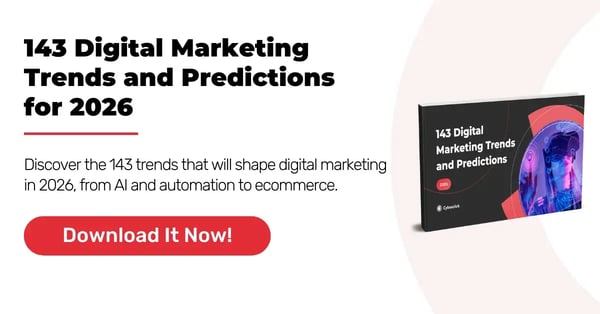In today's world, digital marketing trends extend far beyond platforms like Facebook, Instagram, TikTok, or Google. Instead, new channels like video games are emerging as the latest innovation in digital marketing and advertising.
Video games are now the top choice for audiovisual entertainment in Spain, according to Statista. What was once an exclusive activity for users with gaming consoles is now accessible to anyone with a smartphone. In fact, smartphones have become the preferred device for gamers worldwide.
This shift presents a massive opportunity for advertisers to engage a much larger mobile audience through gaming marketing. Below are the top 5 gaming marketing trends to watch for in 2025.

1. Generative AI in Gaming
Generative AI is transforming gaming in ways that were unimaginable just a few years ago. More than 40 use cases have been identified where generative AI enhances the gaming value chain.
Here’s how generative AI is set to solidify its role in gaming by 2025:
- Dynamic Content and Environment Creation: Generative algorithms allow developers to create complex worlds, missions, and scenarios in less time with fewer resources. This enables games to be continuously updated with fresh content, paving the way for marketing campaigns centered on exclusive or time-sensitive content. Collaborations with brands to integrate their identity into games will become more common.
- Personalized Characters and Storylines: Generative AI enables the creation of characters and dialogues that adapt in real-time to players’ actions and preferences. Advertisers can leverage these personalized characters as natural, contextual channels for engaging with players, rather than relying on intrusive ads. Imagine a game character subtly recommending products aligned with a player’s preferences.
- Optimized Gaming Experiences: AI systems adjust game difficulty and content based on player behavior and skill levels, enhancing user experience and retention. Brands can analyze these patterns to develop highly precise audience segmentation.
- Realistic and Customizable Avatars: Generative AI is widely used to create avatars that visually and emotionally resonate with players, based on their image or preferences. These customizable avatars provide unique marketing opportunities, allowing brands to offer products reflected in the players’ avatars, such as branded clothing or accessories.
2. VR and AR Integration with Cloud Gaming
Over the past five years, Google searches for “cloud gaming” have surged by 975%. This growth highlights the increasing demand for cloud-based gaming models.
By 2025, cloud gaming will play a crucial role in expanding virtual reality (VR) and augmented reality (AR) gaming, providing new avenues for immersive marketing without the need for expensive hardware.
- Access to High-Quality VR/AR Without Expensive Hardware: Cloud gaming processes advanced graphics and simulations on remote servers, allowing players to access VR/AR experiences on basic devices. This democratization of VR/AR access enables brands to reach broader audiences with immersive experiences. For instance, a brand could launch an AR experience within a game, accessible to anyone regardless of their hardware.
- Real-Time, Seamless Streaming: Cloud gaming reduces latency, enabling uninterrupted VR/AR experiences. Advertisers can leverage this for integrated in-game events, flash promotions, or interactive content, capturing users’ attention at strategic moments.
- Facilitation of Virtual Events and Brand Collaborations: Cloud gaming enables global virtual events, such as product launches, virtual concerts, or sponsored activities. Brands can create memorable, immersive experiences that drive deeper engagement and reach global audiences.
3. Gaming Influencer Marketing: New Content and the Metaverse
Gaming influencers are more than just content creators; they are community builders. Approximately 23% of men aged 18-34 follow gaming influencers, making this demographic the most popular type of influencer globally. Platforms like Discord and Twitch have facilitated advertisers' penetration into these traditionally exclusive communities.
Emerging Trends in Gaming Influencer Marketing
- Interactive Collaborations and Exclusive Content: Brands are teaming up with influencers to create exclusive in-game content such as skins, characters, and personalized levels. By 2025, expect more influencers to customize their avatars or virtual environments with branded elements, maximizing product visibility and user engagement.
- Gaming in the Metaverse with VR: As the metaverse and AR experiences evolve, influencers will play a central role in crafting immersive dynamics, from organizing challenges to hosting virtual events sponsored by brands. This will revolutionize advertising with full-fledged branded experiences in 3D spaces.
4. Hyper-Realistic In-Game Advertising
Native in-game advertising allows brands to blend seamlessly into game environments, becoming an integral part of the game rather than intrusive interruptions. Major platforms like Roblox are already innovating in this space. In 2022, in-game advertising was the most valued component of the gaming industry, surpassing even game streaming.
In-Game Advertising Trends: What to Watch
- Real-Time Programmatic Advertising: This technology enables advertisers to purchase and adapt ad placements in games based on real-time audience data, context, and gameplay moments. For example, a racing game might feature billboard ads for car brands or sports equipment.
- Gamification of Ads: Turning ads into interactive experiences, such as challenges or virtual rewards, enhances player engagement. For instance, an energy drink brand could sponsor a "power-up" in a game, creating a fun and memorable user experience.
- Blockchain and NFT-Based Ads: Advertisers can leverage blockchain and NFTs to offer exclusive in-game items or experiences. For example, a brand might release a limited-edition virtual accessory for players to use in the game.
5. Accessibility and Inclusion in Gaming
The push for accessibility and inclusion is reshaping game design and creating new opportunities for brands.
- Adapting to Different Needs: Features like customizable controls, colorblind modes, subtitles, and navigation assistance are making games accessible to a wider audience. This expansion opens a new market for advertisers to reach traditionally underserved players while promoting a socially responsible brand image.
- Representation of Diversity: Inclusive games featuring diverse characters, cultures, and stories resonate with global audiences. Marketing campaigns can tap into these narratives to create emotionally engaging and culturally relevant advertisements.
The Future of Gaming Marketing
Gaming marketing in 2025 will require more than simply placing ads in games. Successful advertisers will need to craft messages and formats that align with the interactivity, personalization, and dynamic nature of modern games.
Staying ahead of these trends is essential for capturing attention, fostering loyalty, and maximizing ROI in an industry that continues to redefine entertainment and engagement.
Key Account Manager Engineer en Cyberclick. Experto en desarrollo de aplicaciones web e integraciones entre sistemas con más de 10 años de experiencia. Cuenta con una licenciatura en Matemáticas, Ciclo Formativo de Grado Superior en Desarrollo de Aplicaciones Informáticas y Ciclo Formativo de Grado Superior en Desarrollo de Aplicaciones Multiplataforma.
Key Account Manager Engineer at Cyberclick. Expert in web application development and system integrations with over 10 years of experience. He holds a degree in Mathematics, a Higher Degree in Computer Application Development, and a Higher Degree in Multiplatform Application Development.






Leave your comment and join the conversation